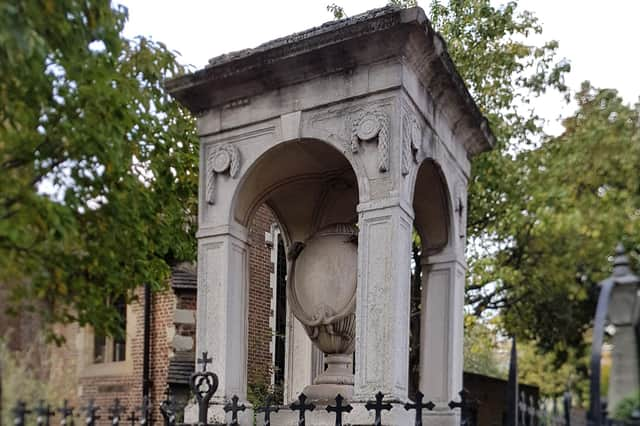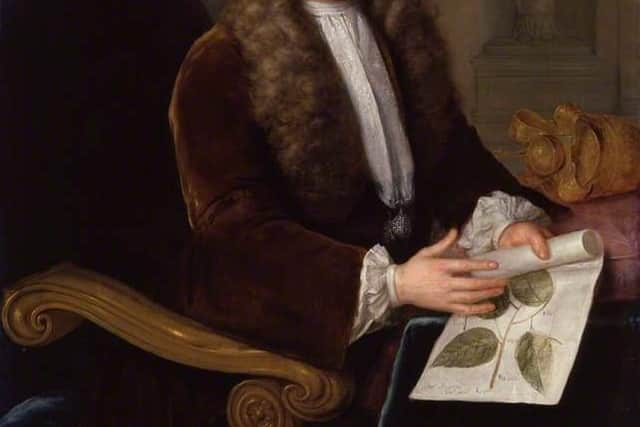Hans Sloane, Ulster-Scot whose bequest formed basis for the British Museum


However, the man who really deserves the credit (or the blame) for introducing the world to drinking chocolate was an Ulster-Scot from Killyleagh, Co Down: Hans Sloane.
Sloane was born on April 16, 1660. Thus, his birth coincided the establishment of the Royal Society of London for the Improvement of Natural Knowledge, normally known as the Royal Society, of which he would eventually become president.
Advertisement
Hide AdAdvertisement
Hide AdSloane’s father was Alexander Sloane, a Scot who was receiver- general of taxes. His mother was Sarah Hicks Sloane, daughter of William Hicks, Canon of Chichester.


After studying medicine in London, Paris and Montpellier, Sloane took his M.D. degree at the University of Orange in 1683. Montpellier was famous for its school of medicine. Both Montpellier and Orange had been Huguenot strongholds. Orange was, of course, the principality in southern France which provided the great William of ‘pious and immortal memory’ with his princely title.
It was between 1687 and 1688 when Sloane was physician to the governor of Jamaica that he discovered cocoa. The locals drank it mixed with water which Sloane found nauseating. However, by mixing it with milk Sloane found it much more pleasant and this is how Sloane introduced the English and the world at large to the joys of drinking chocolate.
Originally, his drinking chocolate was manufactured and sold by apothecaries, the precursors of modern chemists, because it was alleged to have medicinal properties. The secret recipe was later bought by the Cadbury brothers and in the 19th century they marketed the product as ‘Sloane’s drinking chocolate’.
Advertisement
Hide AdAdvertisement
Hide AdIn 1905, Cadbury launched its Dairy Milk bar its, a high-quality product with a greater proportion of milk than previous chocolate bars. Developed by George's son, George Cadbury Jnr, it was the first time a British company had been able to mass-produce milk chocolate. From the outset, it had a distinctive purple wrapper. It proved to be a stunning success, and became the company's best-selling product by 1914.
Hans Sloane was an important figure in the intellectual, cultural and social life of 18th-century England. As an inveterate collector of ‘curiosities’, his huge collection became the basis of the British Museum (and the British Library and the Natural History Museum). His name is also linked to some of the most desirable residential properties in London.
It was while he was in Jamaica that Sloane embarked upon his ‘collection of curiosities’. He subsequently compiled and published an elaborate catalogue for his collection in Latin, then the international language of scholarship.
On his return from Jamaica, Sloane settled in London and practised medicine with great success, being appointed physician-general to the army in 1722 and first physician to George II in 1727. He was created a baronet in 1716, being the first medical practitioner to receive a hereditary title.
Advertisement
Hide AdAdvertisement
Hide AdHe became secretary to the Royal Society in 1693, edited its ‘Philosophical Transactions’ for 20 years, and in 1727 he succeeded Sir Isaac Newton as president.
The origins of the British Museum lie in Sloane’s will and his huge ‘collection of curiosities’.
Since the Renaissance many educated men (and a few women) throughout Europe succumbed to an all-consuming passion for collecting diverse objects whose categorical boundaries remained undefined. Modern science would categorise the objects included in these often very wide-ranging collections as natural history (sometimes faked), geology, ethnography, archaeology, religious or historical relics, works of art and antiquities.
Sloane had a particularly keen interest in curious skeletons, insects, plants and minerals. He also purchased other people’s collections.
Advertisement
Hide AdAdvertisement
Hide AdBeing extremely proud of his collection, Sloane did not wish to see it broken up after his death, so he bequeathed it to George II for the nation, on condition that Parliament pay his executors the then enormous sum of £20,000.
By time of Sloane’s death, his collection consisted of approximately 71,000 objects of all kinds, including some 40,000 printed books, 7,000 manuscripts, extensive natural history specimens including 337 volumes of dried plants, prints and drawings (including some by Albrecht Dürer) and antiquities from Egypt, Greece, Rome, the Ancient Near East and the Far East and the Americas.
Although the British Museum was founded by an Act of Parliament in 1753, the museum first opened its doors to members of the public on January 15, 1759.
It was the first of a new kind of museum: national, belonging to neither church nor monarch, freely open to the public and aspiring to be comprehensive. Sloane’s collection tended to reflect his personal scientific interests but the addition of the Cotton and Harley manuscripts added a strong literary and antiquarian dimension, not least because the Cottonian Library constituted the richest private collection of manuscripts ever amassed, outstripping even the Royal library, the collections of the Inns of Court and the College of Arms.
Advertisement
Hide AdAdvertisement
Hide AdAs Sloane had no son that survived beyond infancy, the baronetcy became extinct upon his death in London.
He was buried on January 18 1753 in the south-east corner of the churchyard in Chelsea Old Church with the following memorial inscription: ‘To the memory of SIR HANS SLOANE BART President of the Royal Society, and of the College of Physicians; who in the year of our Lord 1753, the 92d of his age, without the least pain of body and with a conscious serenity of mind, ended a virtuous and beneficent life. This monument was erected by his two daughters ELIZA CADOGAN and SARAH STANLEY.’
Sloane gave his name to Sloane Square and by extension to the ‘Sloane Rangers’, those young, upper class and upper-middle-class men and women whose natural habitat is the Royal Borough of Kensington and Chelsea. There is a statue of Sloane in the Square named after him. A replica of the statue has since been erected in Killyleagh.